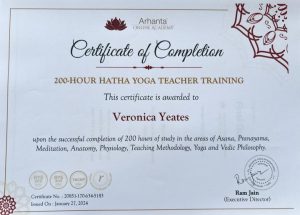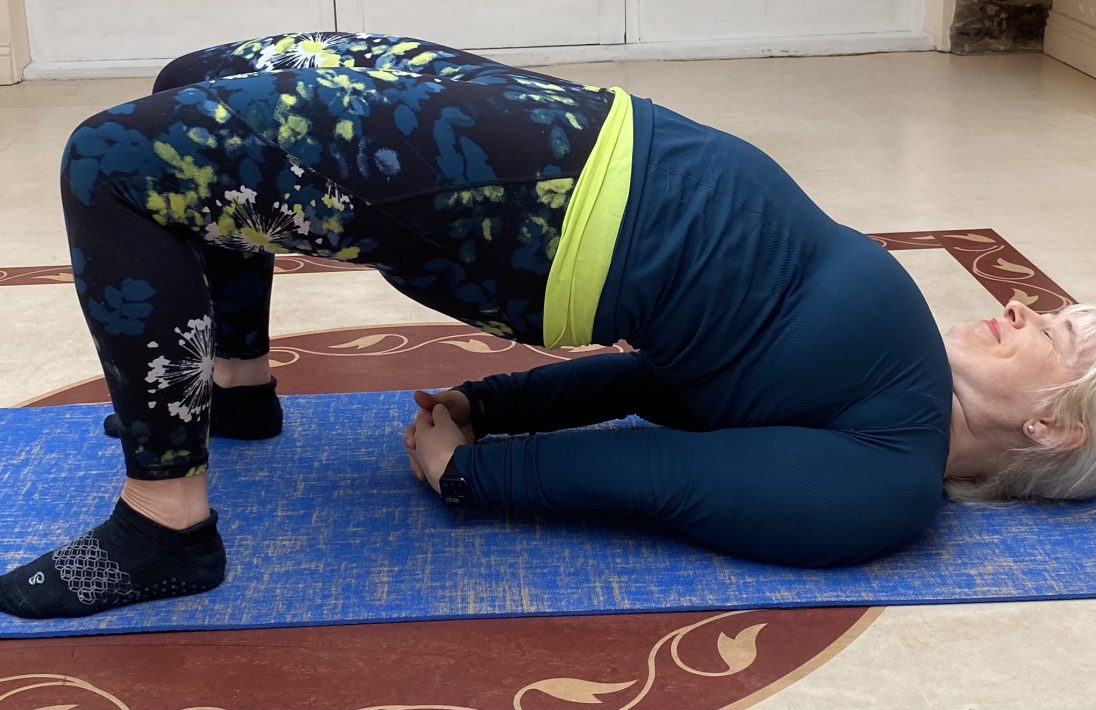Yoga returns to Viney Hall
By Pip on 2nd February 2024
We were priviledged some years ago to offer yoga at Viney Hall, firstly with Kishe Redwood and then Carolyn Thomas. Both these wonderful teachers decided to go their own ways and we have not had yoga here for several years. Yoga is well-known and popular throughout the world and offers a different and complementary discipline to the Pilates classes already available.
Here, Veronica explains her reasons for undergoing training in Yoga, to add to her Pilates skills:
There are a lot of misconceptions about Yoga and I confess that if you had asked me a year ago whether I was interested in doing a course it would have been a flat “No!” So, what changed my mind….?
Why did I choose to do a Yoga certification?
I have always had an interest in Yoga, but had the opinion that it was more about stretching and taking your joints to their end of range, as opposed to Pilates, which promotes core, hip and upper body strength, flexibility, mobility, balance, stability and can focus on working more isolated muscle groups. However, I completed a 2 day Therapeutic Yoga course back in the summer, which made me realise that there is so much more to Yoga than the poses. In fact, in the history of Yoga, poses have only been a thing in the last couple of hundred years, whereas the principles and philosophy of Yoga (the Yoga belief system) have been around for thousands of years.
My Therapeutic Yoga teacher was passionate about Yoga being available to everyone and the whole course was centred around doing some of the basic poses safely and making modifications as appropriate. I share this passion, and the well-being I felt after doing a Therapeutic Yoga class made me curious to learn more about this ancient system and then bring the benefits to you all.
I enrolled on a full Hatha Yoga Teacher Training course which involved 200 hours of study, practice and continual assessments, receiving my certificate on 27th January. I’m now ready to introduce Yoga to our clients at Viney Hall, offering taster sessions Wednesday 14th and Thursday 15th February in our lovely studio at Viney Hall.
What are the benefits of Yoga?
Whilst there are numerous benefits of Yoga, the one that really stands out for me is that Classical Yoga is one of the only forms of exercise that focuses on the health of the internal body. In conventional forms of exercise, our muscles receive more blood and therefore oxygen and nutrients, whereas, the squeeze and release effect that Yoga poses have on our internal organs and glands, plus performing poses in a steady and comfortable way, means more blood flow is delivered to these internal organs and glands. In turn, this can help to balance our hormonal system.
The true meaning of Asana is not pose, but where the mind and body is in a ‘steady, calm and comfortable state’ – when we are able to find this within ourselves during a pose then our breathing is slow and deep. Oxygen consumption is less and there is less stress on the body. Performed properly, Yoga aims to minimise this stress on the body. It also reduces the formation of lactic acid and other toxins, by taking Relaxations between poses. The whole idea of Yoga is to eliminate toxins, not create them.
Is it good for us to be in the Yoga studio every day and not do any other forms of exercise?
I sincerely believe it is all about variety. No, I think we ideally need a balance of stretching, strength and resistance work, cardio vascular exercise, mobilising joints and tissue release. As I said to a client the other day – is it good for you to eat rice every day or maybe better to eat other forms of carbohydrates such as vegetables, potatoes, pasta etc?
How has the course benefited me personally?
Given that Yoga is not just about the poses, the course I undertook included the study of Yoga Philosophy and Anatomy too.
As Pip is always saying, you never stop learning and whilst the basics of anatomy taught during my course were very familiar to me, it gave me a far deeper appreciation of how each and everyone of us are different in our bone structure, size and shape and how this can totally affect what we can expect from our bodies. Again, emphasising the point that you do not have to be a certain shape, size or have lots of flexibility to enjoy and benefit from a Yoga practice.
Yoga Philosophy is a vast subject, but a fascinating belief system that has been around for thousands of years, but is still so relevant in our modern life. Who knows if some or any of it is true, but it has certainly made me take a step back in times of stress and difficulty, take things less personally and hopefully make better decisions and judgements at times.
Then, of course, there are the physical benefits and achievements. I may be over 50, but after a bit of practice I can now comfortably come into a Headstand on my own and hold it for a few minutes! I am feeling more flexible, more confident in my body and what it may be capable of with practice, but also more energised, balanced, steady and I certainly have better breathing habits.
For whom is Yoga suitable?
Hopefully, you know the answer of that by now – everyone! Of course, some of us have limitations and health issues that may preclude us from doing some of the poses, but I would like to think that most poses can be modified, adapted or varied to suit.
What are the different types of Yoga?
Nowadays there are lots of different styles of Yoga.
Hatha Yoga got is name from stubborn monks who did not want to follow the traditional Raja path of Yoga, where they were not allowed to practice asanas until they had purified their qualities and habits. It works on solar and lunar energy channels and incorporates breathing practices (pranayama), calming the senses, concentration (mindfulness) and then meditation. It is a systematic practice with not too much variation in one go, to allow repeated practice and eventually attainment of the steady, comfortable pose and then all the benefits to the internal body that that brings.
Yin Yoga – A slower type of Yoga where poses are held for a minute and eventually up to 5 minutes or more. Designed to increase circulation in the joints and improve flexibility and therefore targets the body’s connective tissues.
Restorative Yoga – Similar to Yin above, but with more use of props to support the body so particularly beneficial for anyone dealing with pain or injuries and those whose need to de-stress and find it difficult to relax.
Vinyasa Yoga – Adapted from Ashtanga below, where Yoga poses are performed in a flow.
Ashtanga Yoga – consists of 6 series of specific poses taught in order. Very physical with a flow style and having spiritual elements.
Iyengar Yoga – Named after its founder BKS Iyengar. Very classical and alignment based with the use of props.
Bikram Yoga – A form of Hot Yoga with a set series of poses performed in the same order with strict rules.
Veronica Yeates
Pilates Manager, Instructor and Yoga Teacher



